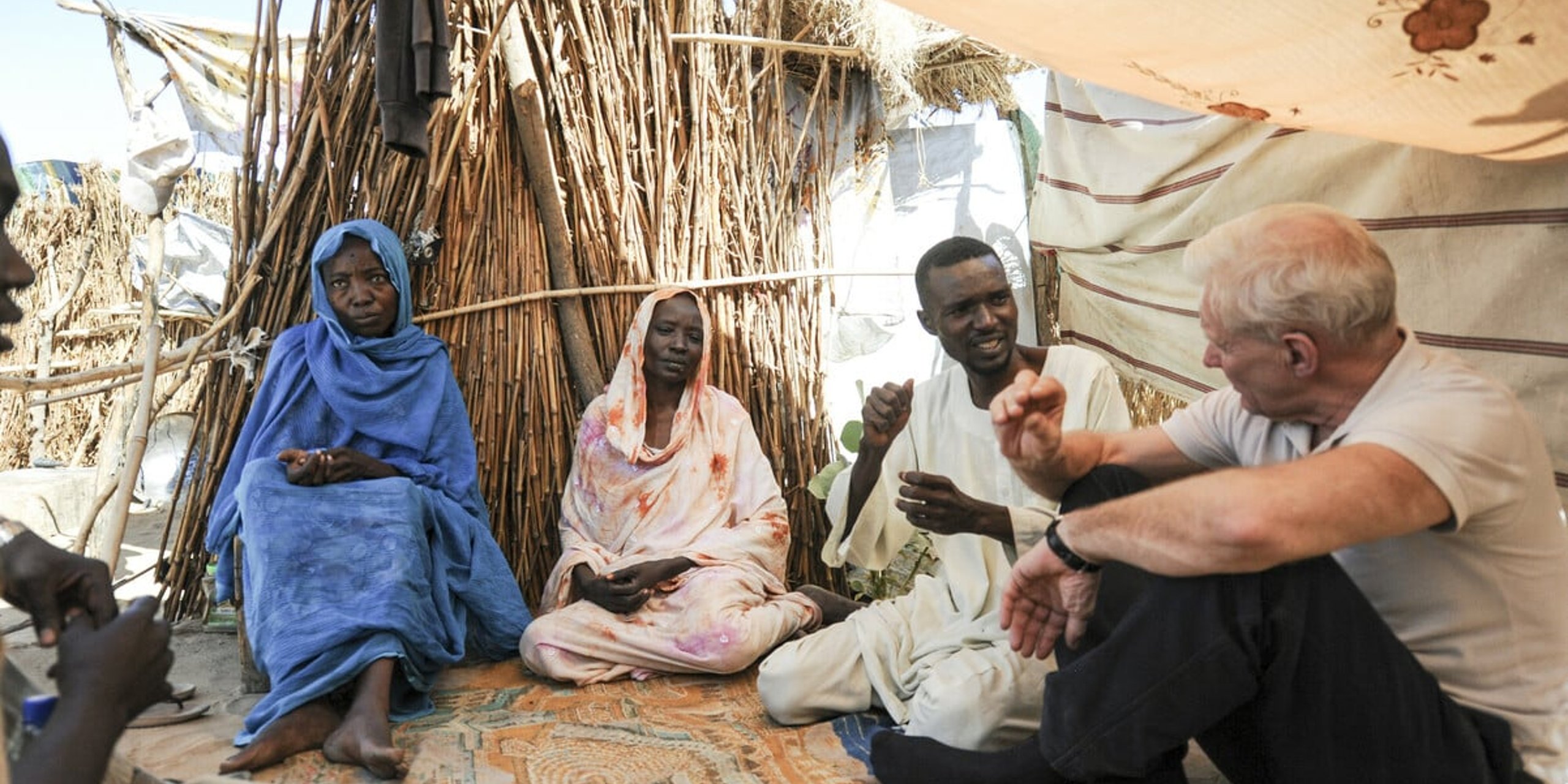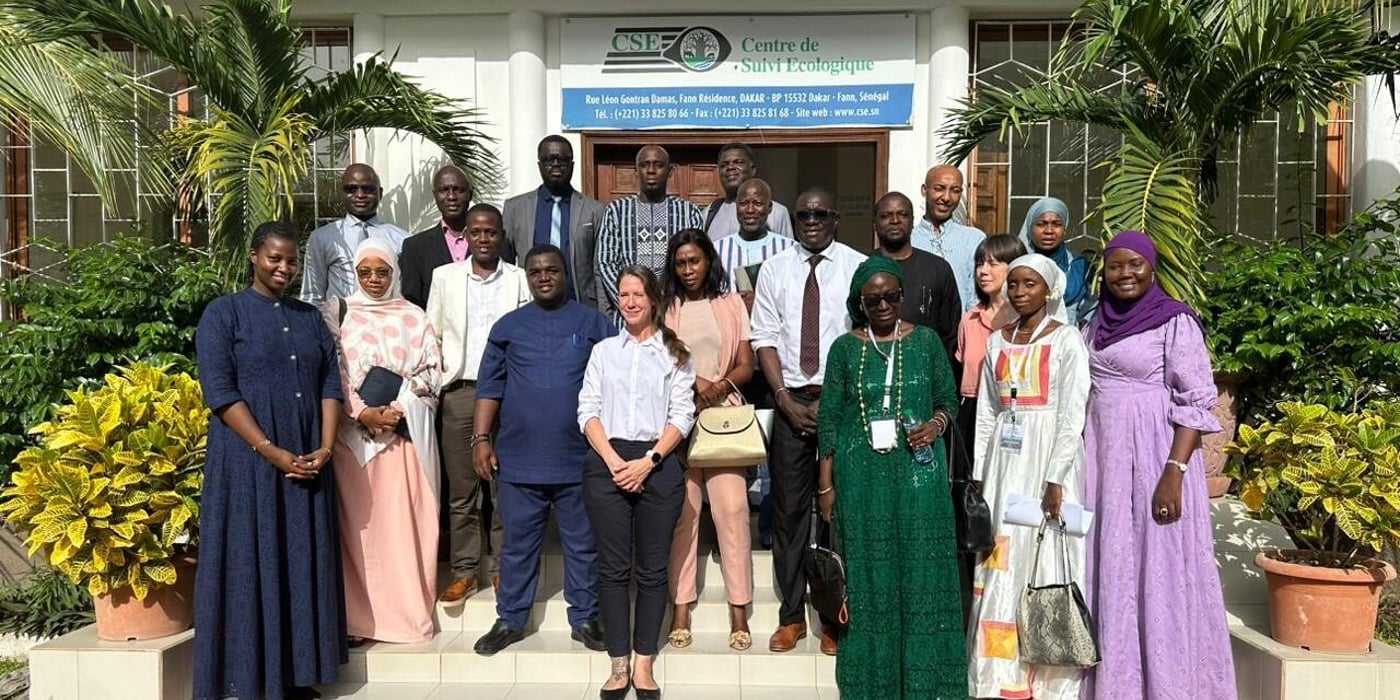
The extreme brutality of Sudan’s war has displaced 9 million people within their own country. This is now the largest war-related displacement crisis in the world, surpassing even Ukraine and Syria. Many people inside Sudan have been forced to flee violence more than once. Another 1.7 million people have escaped Sudan to neighbouring countries. In total, 10.7 million people have been forced to flee Sudan’s brutal conflict but almost no one has found safety.
Chad has received the largest share of people fleeing Sudan, escaping ethnically driven attacks throughout the Western Darfur region. The volume of arrivals has placed an unbearable strain on one of the world’s poorest countries. Refugees in Chad now find themselves lacking even the most basic support necessary for survival. Immediate and increased assistance for Chad and the broader Sudan crisis is required, alongside political courage from the world's leaders to end this senseless violence.
"Here in Chad, I have heard horrifying testimonies of deliberate violence and atrocities. Families fleeing neighbouring Darfur have witnessed executions, rape, indiscriminate shelling, burning of camps, and massacres - just because of their ethnicity,” said Jan Egeland, secretary general of the Norwegian Refugee Council, visiting camps and Adré informal settlement in eastern Chad this week. "And yet many survivors have been utterly abandoned. They are forced to live in desperate, undignified conditions, under make-shift tents, lacking even basic assistance. How is it that these survivors have been so forgotten?”
Ten months into the crisis, the infrastructure in Chad is overwhelmed as a constant stream of refugees continues to enter the country. New arrivals have no choice but to improvise shelters in informal camps and hope for better housing later. Thousands of refugees lack sufficient food and safe drinking water, with people lacking even plastic containers to carry whatever water is available. Aid agencies are warning that the lack of support is setting the stage for humanitarian catastrophe.
Despite a long history of people escaping violence in Darfur by crossing into Chad, both the scale and rate of the current displacement is unprecedented. More people have fled to Chad from Sudan in the last 10 months than during the entire Darfur war in 2003. In Adré, the city closest to the Darfur border, 150,000 refugees are living in a self-constructed informal settlement. Refugees now outnumber locals by more then two to one in Adré.
“I was here 20 years ago, during another period of appalling violence across Darfur, when Bush, Blair and other world leaders and celebrities were speaking out. Today we have three times the number of refugees who fled to Chad in 2003 and 2004. But this time international outrage and solidarity is missing. None of the peace initiatives or relief plans have had any real impact on the suffering inside Sudan or in neighbouring refugee camps. The needs here in Chad are off the scale, but this time the world’s attention has wandered elsewhere. It can’t go on like this,” said Egeland.
“The sheer number of refugees here in Chad, and their harrowing testimonies, tell a story of almost unimaginable human suffering and violence. And yet those we listen to and support in Chad represent the mere tip of the iceberg. The war in Sudan is raging, and the crisis is now the world's largest displacement crisis, with over 10 million people forced to flee inside and outside Sudan. The war is shattering an entire region in the heart of Africa. There must be a more effective diplomatic and humanitarian international response.”
For more information or to arrange an interview, please contact:
NRC global media hotline: media@nrc.no +47 905 62 329
Karl Schembri, NRC Regional Media Adviser currently in Chad: +235 69 86 57 13
Notes for editors:
- Photos and B-roll footage from the secretary general’s visit to Chad and from the work of NRC in the country can be downloaded here
- The total figure of displaced in eastern Chad changes as more refugees and returnees are registered. As of 29 January 2024, UNHCR reports 542,204 refugees and IOM recorded an additional 139,932 returnees. This brings the number of people displaced from Sudan into Chad to 682,136 people (IOM). Chadian returnees are people who have often lived their entire lives in Sudan and, once back in Chad, no longer have strong family ties. They face the same situation and have the same needs as the refugees. The Chadian government estimates that this figure could reach 910,000 by the end of 2024.
- Sudan is the world’s largest displacement crisis. Within Sudan over 9 million people have been displaced, sometimes more than once (OCHA). Outside Sudan, 1.7 people have fled to other countries surrounding Sudan. In total, 10.7 million people have been displaced by the Sudan crisis (IOM)
- Chad is the most impacted of country among Sudan’s neighbours. IOM reports that Chad is hosting 38% of the total refugee population from Sudan, making it the highest recipient of Sudan's 1.7 million people displaced outside the country.
- Whilst over one million people have fled across the border from endemic violence in Darfur over the past two decades, the vast majority of refugees have come in the past 12 months. The 2003 conflict in Darfur resulted in more than 200,000 refugees fleeing to Chad over 16 months (OCHA). The number grew to 400,000 in subsequent years, most of whom remain in eastern Chad to this day. This means Chad is now facing three times the number of people who arrived in the first year of the 2003 war. In total more people have crossed into eastern Chad in the last 10 months than the entirety of the 20 years of the Darfur war.
- Adré is a city near the border with Darfur. Adré has been the entry point for thousands of people fleeing targeted violence in Darfur as it is less than 25 km from Geneina, the capital of West Darfur. Adré hosts over 150,000 displaced Sudanese. In Adre, refugees outnumber locals by more than two to one as the local population is only 68,000 (OCHA).
- Chad ranks at the bottom of most human development indicators and has one of the highest levels of hunger in the world. In Chad, 42% of the population is living below the poverty line (WFP). In eastern Chad, host communities and refugees face nearly the same level of vulnerability.
- There is more than one refugee crisis in Chad. Overall, there are beyond one million displaced people across Chad. In Chad there are now 542,204 Sudanese refugees and 139,932 Chadian returnees newly arrived but also over 598,000 refugees and other asylum-seekers already present in Chad (OCHA).
- Sudanese refugees in Chad are overwhelmingly women and children. According to biometric registration data from UNHCR , 88% of refugees are women and children, 75% of registered refugees are 26 or younger, and 50% are 12 or younger.


